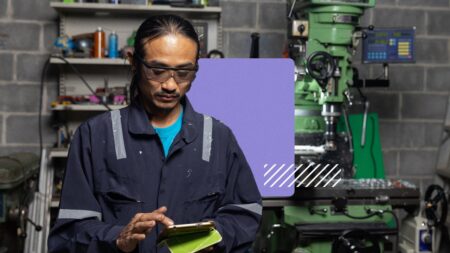CEO at Sero, a leading Customer Success tool backed by Y Combinator.
In today’s fast-paced B2B environment, the bar for customer service excellence keeps rising. Customers now expect not just solutions but personalized and efficient interactions with the companies they do business with. This shift presents a significant challenge for customer success teams at B2B startups, who must scale their operations without sacrificing the quality of success as their customer base grows.
At the intersection of AI as a builder and CS as a practitioner, my expertise stems from my knowledge in building AI systems and my own experience in customer success. I am currently building AI powered tools for customer service, and I have led and consulted customer success teams in the past.
I’m seeing traditional models of customer success increasingly unable to meet these demands, often being reactive rather than proactive. Against this backdrop, artificial intelligence (AI) emerges as a transformative tool, offering scalable, personalized and proactive customer success solutions.
The Current State Of Customer Success
As startups scale, customer success teams scale exponentially. Your original product becomes more complex, you tend to go multiproduct and the surface area of customer interaction increases significantly. In such situations, teams often find themselves in a reactive stance, dealing with issues as they arise rather than preventing them. This model not only limits the potential for exceptional service but also hinders the ability of startups to scale effectively and maintain strong relationships with their growing customer base. It also leads to burnout and lack of personal growth for your customer success teams.
The Future Of Customer Success
The future of customer success starts with ensuring the customer journey is perfect right from the start. If your customer has a poor experiencing in purchasing your software or if your sales team isn’t in sync with customer success, your customer will start off on the wrong foot.
AI powered workflows can ensure this isn’t the case. Here are some ways in which you can leverage AI to create a seamless customer journey:
1. Prospecting
When a prospect is interested in your solution, you can create a collaborative space to interact with them in the form of a Deal Room. Instead of long email chains where details get lost, Deal Rooms serve as a way to consolidate information for the prospect and give them a single portal to interact with your team. With AI, you can ensure that the customer has all their queries answered and that they are served the right content at the right time in this Deal Room. Another critical component is that you can have the AI take notes of the customer’s interactions so that when they sign as a customer, there is complete clarity on what their experience so far has been.
2. Sales To Customer Success Handoff
Once a customer is closed, they need to be handed over to customer success. This is a critical step that is often overlooked or overly manual. As mentioned before, your customer has left digital footprints throughout the sales process. In the handoff, AI can retrieve these footprints and condense them into meaningful information that will enable customer success teams to easily take control of the account.
3. Onboarding
Based on the segment the customer falls into, you can leverage AI to provide tailored onboarding sessions. This can involve custom project plans and training paths that align with their goals.
4. Adoption
Once the customer is using the product, AI can analyze usage patterns and customer feedback enabling customer success teams to intervene early, offering personalized support and resources. This proactive approach not only reduces churn rates but also increases customer satisfaction and loyalty.
5. Renewals And Upsells
If customers are truly loving the product and there exist opportunities to increase value by providing additional offerings, AI can help you identify them.
Improving Customer Success
To get started, leaders can:
• Map out existing workflows to understand what is actually going on.
• Look at steps in the workflow where there is good quality data available for you to train AI models on.
• Once you have identified a step, train a model on existing data and then validate the results with a human in the loop. That is, let the AI assist the human so that you can first confirm that the AI is in fact working well.
• Over time, as you realize where the gaps are, intentionally collect more data and retrain the model. Some advice here: Don’t build infrastructure in-house since the AI infrastructure landscape is changing rapidly and there are new developments every week.
Conclusion
The future of customer success does not involve replacing the customer success team but rather making them hyper efficient. It ensures they are strategic with each move instead of reactive. Leveraging AI is going to be necessary for companies to remain competitive.
Forbes Business Council is the foremost growth and networking organization for business owners and leaders. Do I qualify?
Read the full article here
















